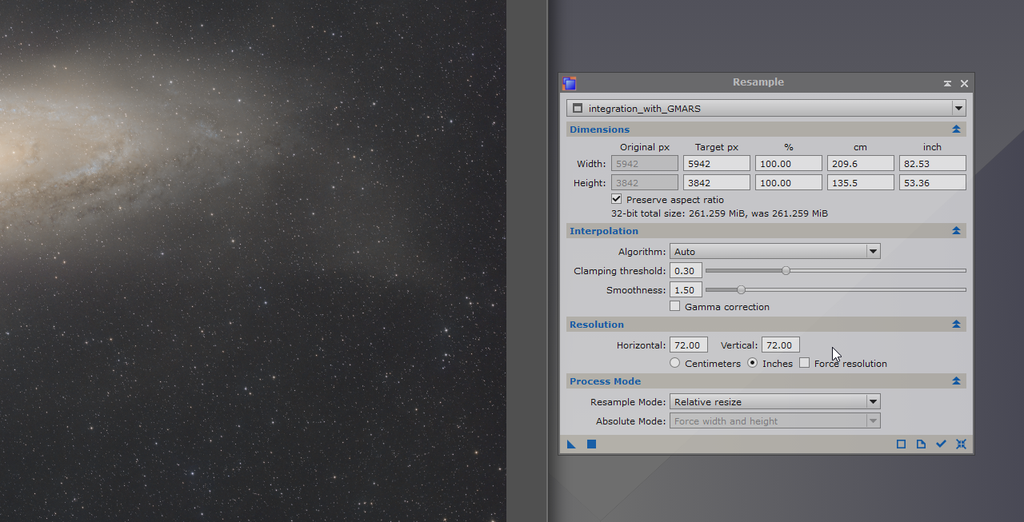Clayton Ostler:
I absolutely love the AstroTech and I wasn't trying to convince anyone just kind of stating what I use and it is a great scope. I have three refractors, two are astroTech one is an Askar. I'm happy with all of them. But the truth is that 60 mm is my go to favorite at the moment. Not like it really matters but it's all black and it looks pretty good too
I don't really understand what you're saying about changing the sampling and the software, do you have a link where I could read about that? That seems like something I really would like to look into.
If you're using PixInsight, the "Resample" process (I don't know what the equivalent is in other software) allows you to downsample (and upsample, but for this discussion we don't care about that) your image, improving SNR. It's similar to the binning of the CCD era. People with huge scopes and small pixel cameras commonly do it.
For the example I posted, you'd simply divide either the width or height by 1.2 and put that value in the respective field (it will automatically adjust the other)

The result gives better SNR with loss of resolution, almost as if I took the picture with a faster system (but FOV doesn't change).
Of course, this says nothing about the actual difference, if any, in optical quality between any two systems. It does show how a "slower" system can easily be brought close to par with a "faster" one, however.



